This time of year, the radishes stand out like bright bunches of candy. Sometimes at the farmers market, I ask the vendors what to do with their pretty orbs, because I’m chronically at a loss for ideas. The most common guidance, by far, is to use radishes in salads and stir-fries. In other words, the farmers are just as clueless as I am.
Those sassy, juicy roots are tricky. Unadulterated, the feisty flavor of a radish is more difficult to appreciate than that of, say, an apple or carrot. And in the mixed company of a gentle bowl of leaves, that blast of mustard fire can stick out awkwardly.
In the case of a stir-fry, the task is to not overcook the radish to a catatonic state with nothing to offer but limp, bland remains. I can think of some great Thai stir-fries that begin with pickled radish, which has a unique and enduring flavor. But I’ve yet to find a stir-fry that was improved by cooking fresh, non-pickled radish.
At least in a stir-fry, the overcooked radish won’t drag the entire dish down. But when it comes to adding radish to salads, the possible downside is greater. A fresh radish in a salad can be like a drunk passenger on a plane to Vegas: Obnoxious, loud, and overpowering your bowl of leaves in its delicate vinaigrette, unless it’s applied perfectly, accompanied by just the right handlers.
The other day, the rowdy radish proved me wrong, by way of a salad from The Camino, a Mexican-esque restaurant in Missoula, Montana. The food is unique, well-researched, and as authentic as you can get without a green card, down to the house-nixtamalized corn in the the tortillas, tamales, and posole.
The Camino’s owners, Phil Schaefer and Tad Hilton, were kind enough to share the recipe for their humbly-named “Arugula Salad,” created by their sous chef Rob Troiano.
“We wanted to do a spring salad, and we wanted to use ingredients that we use in a lot of the dishes like the guajillo vinaigrette, which is mostly lime and guajillo powder with shallots and a little agave,” Hilton explained. This citrus chile vinaigrette dresses the arugula and toppings, which include toasted almonds, shaved onion, diced avocado, roasted radishes, and raw chayote squash—a pear-shaped unit with light green, ruddy skin that’s ubiquitous in Mexico and Mexican food, according to Hilton.
The radishes are lightly roasted, which preserves their crunch while taking enough edge off their fiery essence that the chile, lime, arugula, and shallots can form a smooth transition, and help the radish blend in, rather than stick out. The avocado and chayote squash serve as refuge—creamy, crunchy, and refreshingly bland.
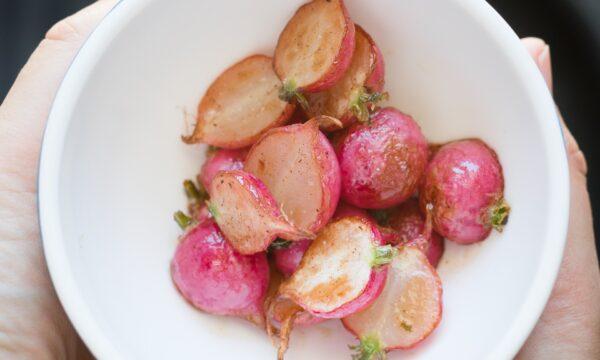
Arugula Salad With Roasted Radishes, a la The Camino
The key to this salad is to not overwork the leaves, Hilton said. This isn’t a tossed salad. Arugula is fragile. “We build the salad on the arugula base and layer everything on, and drizzle the dressing over it, so it doesn’t wilt the arugula,” he said.A guajillo pepper is by definition dried—it goes by a different name, mirasol, when fresh—and anything guajillo touches is practically Mexican by definition. If you can’t find guajillo, try your favorite dried chile. It'll be delicious, if less authentic. And if you can’t get chayote squash, try using daikon radish, which brings similar qualities to the table.
Schaefer recommends pairing it with a chilled L.A. Cetto Chenin Blanc from Baja Mexico’s Guadalupe Valley.
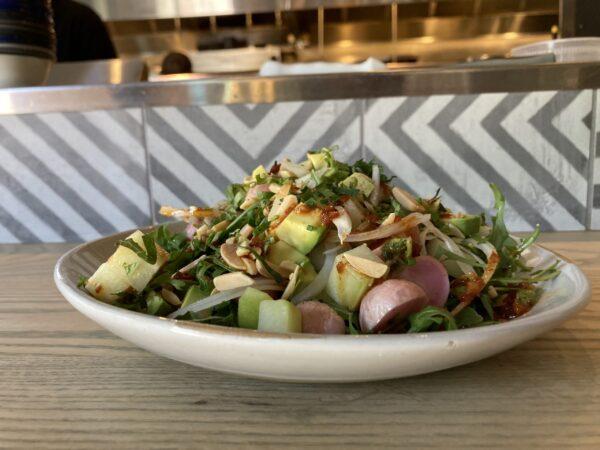
- 2 guajillo peppers (or a tablespoon of guajillo powder)
- Juice of 2 limes (about 2 ounces)
- Zest of 1 lime
- 1 teaspoon salt
- 1 teaspoon agave nectar
- 1 small shallot, minced
- 1 cup oil (they use a neutral canola; I prefer the bitterness of olive oil here)
- 5 radishes, trimmed such that a little stem and the long taproot remain
- Oil to coat the radishes
- 3 cups fresh arugula
- 1/4 cup shaved onions
- 3 tablespoons toasted almond slivers
- 1/2 cup diced chayote squash (or daikon radish)
- 1/2 cup diced avocado
- Black pepper and salt to taste
- 1/2 cup chopped herb mix of chives, cilantro, and epazote (if available)
Gently roast the guajillo peppers in a dry pan until crispy, but not burnt—I use the same pan to simultaneously toast the almonds for the salad, below. When cool, remove the stem and seeds from the toasted peppers and pulverize the remains in a blender or mortar and pestle. Omit this step if you are using guajillo powder.
Combine the lime juice and zest in a medium-sized mixing bowl. Add the salt, agave, shallots, and chile powder and stir it together. Whisk in the oil.
Toss the radishes in oil, salt, and pepper, and roast whole at 375 degrees Fahrenheit for 16 minutes. When cool, slice them in half along the stem-to-tail axis.
Add the arugula to a plate, topped with radish halves, shaved onions, toasted almond slivers, chayote or daikon pieces, and finally the herb mix. Grind black pepper over the whole thing, add a pinch of salt, and drizzle it with 3 tablespoons of the guajillo lime vinaigrette.

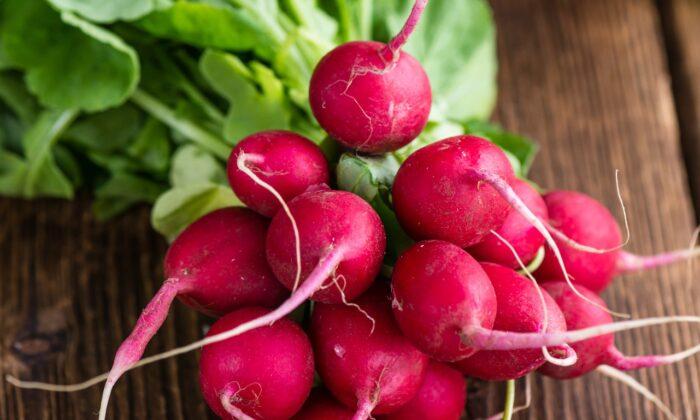
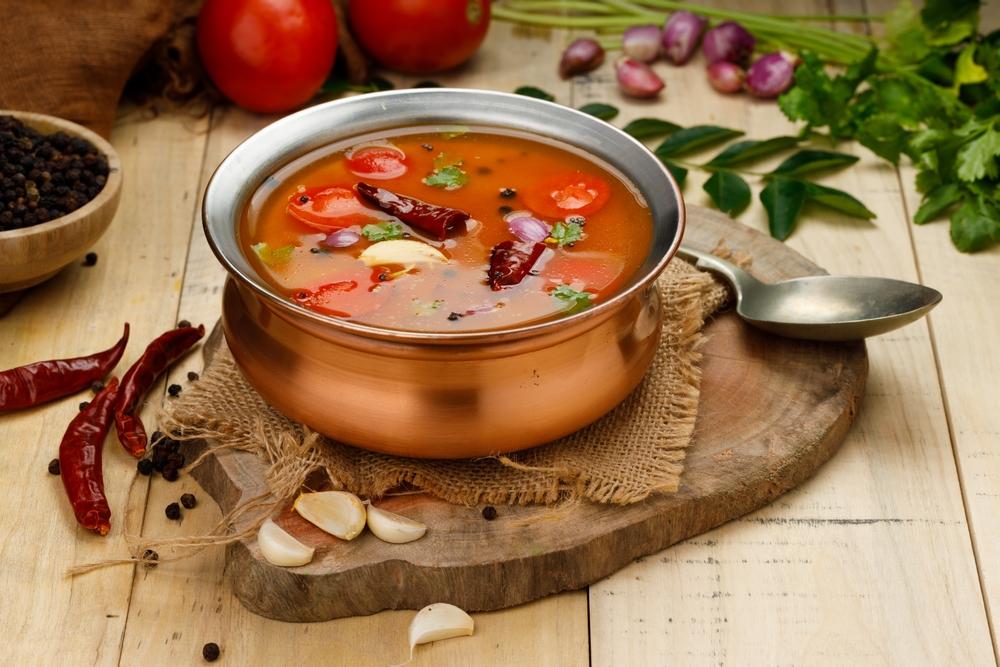

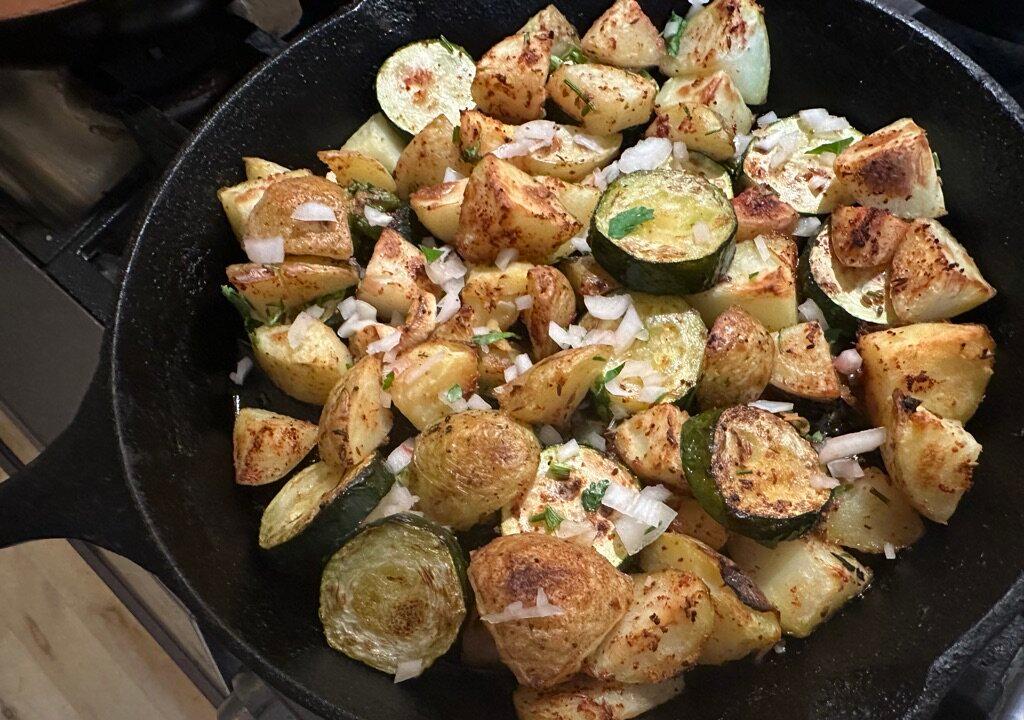
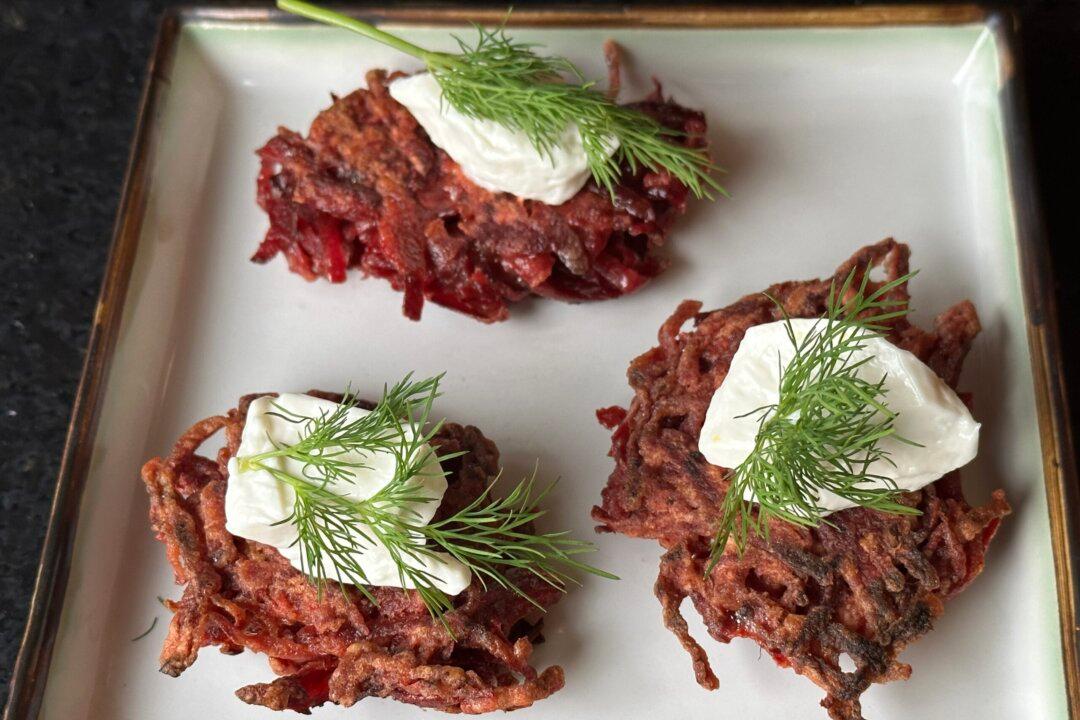
Friends Read Free